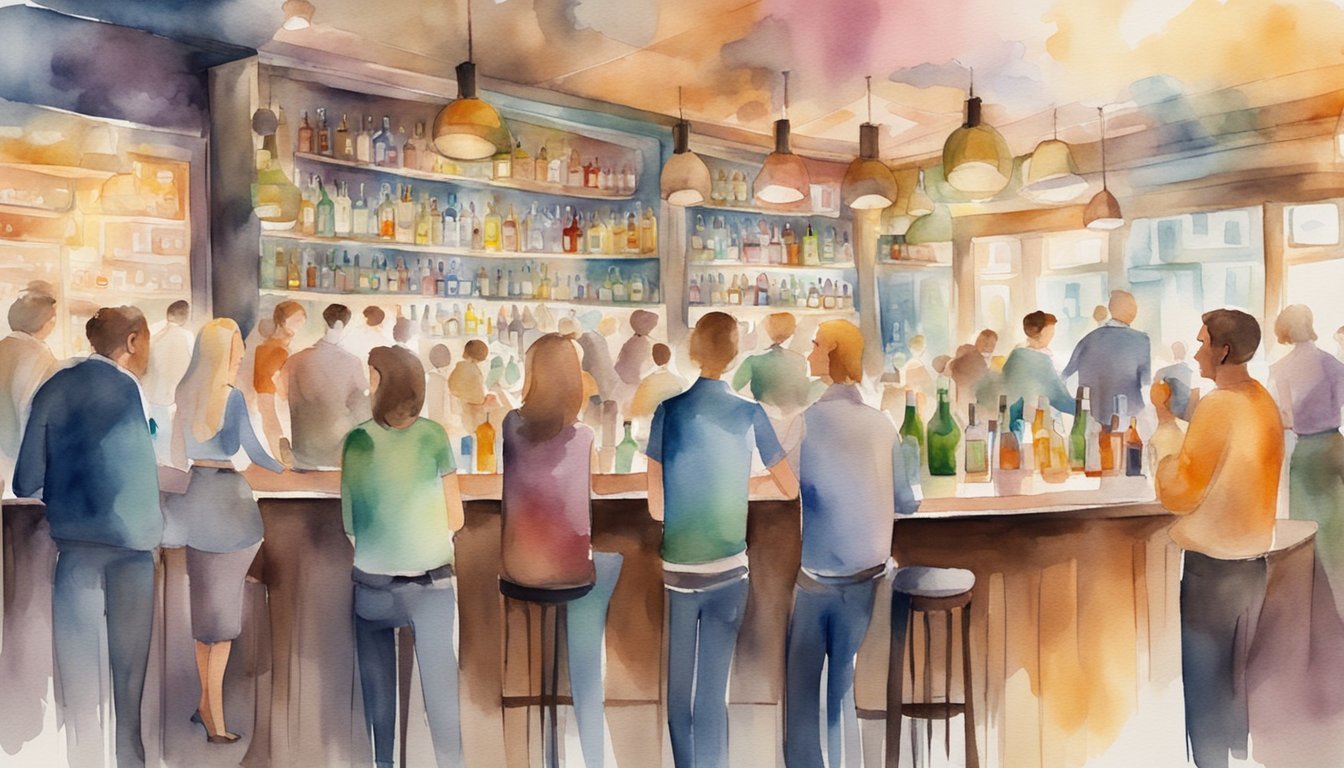Understanding Alcohol’s Legality
This section explores the historical evolution and current legal framework surrounding alcohol consumption in the United States. It pays particular attention to key legislative acts that shape how alcohol is regulated today.
Historical Context of Alcohol Use
Alcoholic beverages have been consumed for centuries, serving an array of cultural, social, and economic functions. In early America, alcohol was not only a common aspect of daily life but also served as a trade good for these burgeoning societies. It wasn’t until the temperance movement gained traction that significant opposition to alcohol consumption emerged.
Alcohol Prohibition and the 21st Amendment
Prohibition, enforced by the 18th Amendment, made the manufacture and sale of alcohol illegal from 1920 until 1933. However, this period saw a rise in underground liquor trade and widespread disregarding of the ban. The 21st Amendment, therefore, was enacted to repeal Prohibition and transition control of alcohol laws to the individual states.
Federal and State Alcohol Laws
The federal government allows local governments control over alcohol regulations, while simultaneously setting certain federal laws. This includes laws on the taxation and interstate commerce of alcoholic beverages. Meanwhile, state law can vary greatly, with each state holding the power to regulate the manufacture, sale, and possession of alcohol within its borders.
National Minimum Drinking Age Act
The National Minimum Drinking Age Act of 1984 was a federal statute that mandated a minimum drinking age of 21. It stipulated that states must adhere to this age limit or face a reduction in highway funds. While federal law mandates this age limitation, there are exceptions in certain states that allow minors to consume alcohol under specific circumstances, such as religious ceremonies or parental consent in private settings.
Societal Impacts and Health Considerations

Alcohol is deeply integrated into many social contexts, yet its consumption comes with significant health and societal costs. From public safety concerns to economic burdens, understanding the full spectrum of alcohol’s impact is critical.
Health Effects of Alcohol Consumption
Alcohol consumption has both short-term and long-term health consequences. Short-term risks include injuries, such as those from falls or car accidents, and violent behavior. Long-term, chronic drinking can lead to serious health problems, including liver disease, heart disease, cancer, and neurological impairments such as dementia. According to the Centers for Disease Control and Prevention, alcohol use plays a role in one in ten deaths among U.S. adults aged 20-64 years.
Alcohol Abuse and Public Safety
Excessive alcohol use is linked to a spike in public safety risks, including motor vehicle crashes, suicide attempts, and a spectrum of alcohol-related crimes. For example, the National Highway Traffic Safety Administration reports that in the U.S., alcohol-impaired driving fatalities account for nearly 30% of all driving fatalities each year. Furthermore, alcohol misuse can impair brain development in young adults, significantly affecting safety and decision-making processes.
Economic Impact
The alcohol industry contributes to the U.S. economy through production and sales. However, the economic burdens of excessive alcohol consumption are substantial, with the CDC estimating the cost of excessive drinking at $249 billion in 2010. These costs arise from lost workplace productivity, healthcare expenses, and criminal justice costs, reflecting the complex relationship between alcohol sales and its impact on the economy.
Regulation, Safety, and Enforcement
Alcohol regulation, safety measures, and enforcement vary significantly. While some local restrictions exist to curb the illegal liquor trade, challenges in policing underage drinking and DUI (Driving Under the Influence) persist. Penalties for alcohol-related offenses aim to deter excessive alcohol use and misuse. Moreover, the Alcohol Policy Information System provides a detailed analysis of alcohol-related policies and their implications for public health. Regulations aim to strike a balance between personal freedoms and the welfare of the community.

